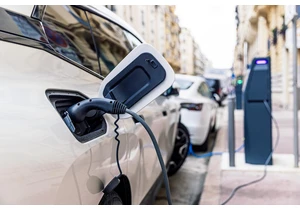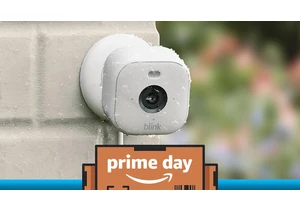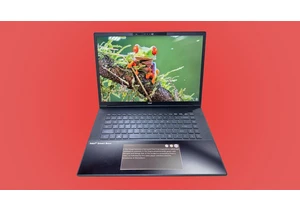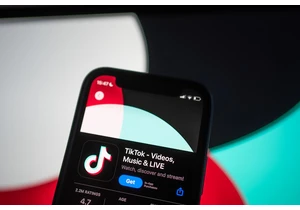The Apple Vision Pro has made my eyes work harder than ever before. It's not just because I have ultra-sharp, incredibly bright micro-OLED screens right on my face: The Vision Pro relies on eye tracking for navigating visionOS, its new "spatial computing" operating system. If you want to launch an app, visit a link or do just about anything that would typically require a mouse or a touchscreen input, your eyes have to look directly at them.
It's magical, almost telepathic. The Vision Pro's eye tracking makes it feel like you're discovering the power of the Force, a sensation that's buoyed by the intuitive hand gestures used to interact with whatever your eyes are focused on. But by relying so much on your gaze, the Vision Pro can quickly become exhausting when you run into issues, like trying to hit a tiny button on YouTube's visually overstuffed website. The eye strain is real.
That's pretty much the Vision Pro experience in a nutshell. Wonder and frustration. A peek into the future that's limited by the hardware that exists today — even if that hardware is among the best we've ever seen.
Before you ask, no, you probably shouldn't even think about buying the Apple Vision Pro. It's purely meant for developers, wealthy Apple fanatics who won't think twice about jumping on a $3,500 curiosity, and, of course, clout-chasing influencers. But you also shouldn’t dismiss it entirely. This is just the beginning of Apple's spatial computing journey. Like the iPod and iPhone before it, the Vision Pro has the potential to fundamentally reshape the way we live with technology.
That future is likely years away, assuming Apple manages to deliver a cheaper and lighter headset. But it's fascinating to see the company set off an entirely new direction of computing, without knowing exactly where it's headed.
What is the Apple Vision Pro?
Despite Apple’s refusal to say the words virtual reality, or even the letters V and R in that order, the Vision Pro is a virtual reality headset. What makes it unique from almost every other VR headset we've seen over the past decade (save for the Meta Quest Pro and Quest 3), is that the Vision Pro delivers a video feed of the real world to its micro-OLED screens. It's a far diminished view of reality — colors are muted, dark scenes look fuzzy and objects warp as you move around — but it's the best attempt we've seen at augmented reality (AR) from a VR headset.
The Vision Pro isn't a purely AR gadget like Microsoft's HoloLens and Magic Leap's headsets, both of which display digital overlays atop transparent lenses. Those devices deliver far more realistic AR experiences, since they don't have to recreate the real world via cameras. But they can never achieve the sense of immersion you feel from a VR headset, where your entire field of view can be taken over by digital environments. (The Magic Leap 2's dimming displays are one attempt to address that.)
In an ideal world, Apple wouldn't have to do the work of capturing reality through cameras and feeding it onto a headset display. VR aficionados call this "passthrough," but it’s just a brute force method for mimicking augmented reality. It's far easier to make the world digital, rather than dealing with complex new display technology to paint the real world with virtual objects.
In typical Apple fashion, the Vision Pro looks far more handsome than any VR headset I've seen. That mostly comes down to materials: Whereas the competition is almost entirely made of plastic cases, Apple's device is built out of smooth glass, polished metal and designer fabrics. Bulbous glass protects the cameras, sensors and "Eyesight" display (which shows off virtual reconstructions of your eyes) up front. A curvy metal body, which resembles the Apple Watch and previous iPhone models, leads to a soft fabric eye cushion.
The Vision Pro ships with a flexible single band headstrap, which looks like a long lost Lululemon accessory, and there's an optional dual loop band that adds a top strap for additional security. While I loved how luxurious the single loop band felt (especially the additional cushioning behind my head), it grew uncomfortable over longer sessions trying to keep the 1.3-pound headset on my face. I stuck with the dual loop band — which is conspicuously absent from Apple's press images — to spread that weight out more evenly.
And then there's the external battery, which almost single-handedly kills Apple's ultra-polished aesthetic. It looks like a typical USB battery pack (albeit with a nicer metal finish than most), and it attaches to the Vision Pro via a five-foot cable. It's very existence seems like everything Apple is against — even the Meta Quest line has a seamlessly integrated battery. While I dreaded having to juggle a cable around, I'll admit it wasn't too annoying while I was sitting down. But this isn't the sort of compromise I'd expect from a $3,500 device.
The Vision Pro's hardware
Given the amount of technology stuffed into the Vision Pro, though, it may be understandable why Apple didn't want to shove in a heavy battery. The headset features an M2 chip with an eight-core CPU, 10-CORE GPU and a 16-core Neural Engine for AI processing. There's also 16GB of RAM onboard, along with Apple's R1 chip for processing all of the cameras and sensors needed to capture a feed of the real world. Those include a LiDAR scanner, TrueDepth 3D camera, six world tracking cameras, two high-resolution main cameras, four internal eye-tracking cameras, a flicker sensor, ambient light sensor and four inertial measurement units to track how your head and body is moving in 3D space. Whew.
Perhaps most controversially, the Vision Pro ships with a mere 256GB of storage. That's awfully low for a $3,500 device, especially since Apple is positioning it as a full-fledged computer, which means you'll be installing plenty of apps and games. And while you'll likely be streaming video to it most of the time, such a low amount of storage doesn't leave much room for offline media (there's no SD card expansion either, typical for a mobile Apple product). If you're buying the Vision Pro, we'd recommend the $3,699 512GB model for a bit more breathing room, or you can top it out with 1TB of storage for $3,899.
Apple might have played it safe with the Vision Pro's battery and storage to make room for its display, which is one of the most glorious screens to ever befall my eyes. It's a Micro-OLED panel (a technology that's so new, I've only seen it on one other shipping product: the BigScreen Beyond) sporting 23 million pixels, or nearly three times the resolution of a single 4K screen.
After trying almost every major VR headset since the Oculus Rift DK2 prototype, and testing a wide variety of increasingly large gaming monitors, the Vision Pro's screen is a revelation. It's wonderfully sharp and crisp, making text easy to read (which wasn't always possible on early VR headsets), and packing enough pixels to scale 4K movies to theater-sized screens. The Vision Pro supports refresh rates up to 100hz, which makes scrolling through websites feel silky smooth, and it can play movies in multiples for 24fps and 30fps for judder-free playback. (That's the slight stuttering you see on TVs during action scenes and camera pans.)
The Vision Pro also supports HDR, which produces brighter highlights in photos and videos, as well as more nuanced black levels. Dark scenes look particularly spooky, since the Micro-OLED display can achieve pure black, unlike headsets with LCD panels. When I first enabled Apple's immersive environment on the Moon, I spent a while just staring off into the darkness of space, with only the rocky lunar surface and the distant Sun keeping me company.
I'd like to say I flipped on some classical music as I contemplated the meaning of existence, but in truth I just started playing "OK Computer" for the millionth time and wallowed in nostalgic angst and my fears of where technology is taking us. The Vision Pro, for better or worse, is the ideal device for escaping the troubles of the world. (I realized after a few minutes that I was basically recreating the infamous Watchmen scene with Doctor Manhattan sitting alone on the desolate surface of Mars, eager to leave humanity behind. Perhaps I need a vacation.)
The headset's built-in Spatial Audio speakers are good enough for unplanned bouts of nostalgia, YouTube binge sessions and general computing. They're far better than typical laptop speakers, with enough depth and nuance to capture Thom Yorke's ennui. There's not much low-end though, so you'll have to stick with headphones if you want to enjoy thumping bass for music and movies. (At the moment, the Vision Pro supports Apple's AirPods and wireless Beats headphones, and I haven't had luck connecting it to any other wireless cans, like Sony's excellent MDR-1000XM5.) The Spatial Audio speakers are also open, so anyone nearby will get an earful of whatever you're hearing.
Listening to music on the Vision Pro sounds like having an actual speaker in your room, and true to its name, audio also follows apps around your virtual space. Apple earned a patent for audio ray tracing, and it's clear after just a few minutes that the company has thought deeply about how sound works throughout VisionOS. (We sure have come a long way from highly compressed iTunes music and tinny white earbuds.) The Vision Pro also features a six-mic array to capture your voice while shouting at Siri, dictating text and hopping on video chats.
Setting up the Vision Pro
Getting started with the Apple Vision Pro wasn't very different from my hands-on experience last year. Once pre-orders were available, I briefly scanned my face on the Apple Store app (which determines the size of your light seal cushion and headband) and selected the 512GB storage option. That's pretty much it for choices, unless you're adding accessories like the $200 travel case.
Since the Vision Pro doesn't support glasses, I also had to plug in my eye prescription to configure the $149 Zeiss lenses (which snap onto the headset magnetically). My prescription expired, it turns out, which led to a mad scramble for a quick eye exam. Thankfully, it was easy to upload a new prescription via the Apple Store app — you're not forced to visit another retailer for custom lenses like the Quest 3.
Once my Vision Pro arrived on launch day, I tore open the package and was surprised to find it stuffed with accessories. In addition to the headset, battery and Solo Knit Band, you also get a soft cover, an additional Light Seal Cushion (which may be thicker or thinner than the one installed on your headset), and a Dual-Loop band for additional security. There's also a USB-C charger, 1.5 meter USB-C cable, and a polishing cloth (which definitely came in handy.)
The first time I put on the Vision Pro my wife looked at me with an expression somewhere between bewilderment and disgust. She's been forced to live through my VR adventures over the past decade, but this was clearly not another plastic helmet meant for a gamer cave. The Vision Pro looks sleek and stylish, but it's still undeniably dorky once you put it on, like an over-engineered attempt at Robocop cosplay.
Apple has gotten its onboarding experiences down to a science at this point. Once I had the Vision Pro on, I stared ahead to create an Optic ID, biometric authentication based on your iris, as well as a six-digit security pin. Next up I had to create a Persona, a creepy digital reconstruction of my face that shows in Facetime calls and powers the digital eyes on the front Facetime screen. Building your Persona involves taking off the headset, following its instructions to look in every direction, and then forcing a closed mouth smile, an open-mouthed smile and a view of your eyes closed.
I probably should have warned my wife about this whole process — she practically screamed when she saw my digital eyes peering out at her. Perhaps the world isn't ready for us to see our loved ones rebuilt as soulless digital avatars.
Hello, Spatial Computing
With the busy work done, I was confronted with a common site: A home screen. But this one was floating above a pile of toys in my family room, not confined to a screen like my iPhone or iPad. The first time I tried the Vision Pro, I was sitting in a boring Apple meeting room that was hastily constructed to show off the headset. But now I was home and I was looking at the VisionOS's interface hovering right where my kids play. It felt like using an iPhone for the first time. I knew computing would never be the same.
As my eyes darted around familiar app icons, like Safari, TV and Photos, they each came to life, ready for me to launch them by touching my thumb and index finger together. I had been thinking for weeks about the first thing I would do with the Vision Pro, and it ended up being a perfect inaugural moment for Apple's spatial computing vision.
I opened Photos, headed to a recent Spatial Video from a trip to Zoo Atlanta, and my eyes welled up a bit with tears. My wife and kids were sitting on a small train ride, eager to make a loop around the zoo, and I was rewatching (practically reliving) that moment in 3D. It's as if it was caught in amber. Sure, the resolution and frame rate could be better (iPhone 15 Pro Spatial Videos are only captured in 1080p at 30fps), but it's still astonishing how immersive it feels.
I was also surprised at how well the Vision Pro handles panoramic photos: Hit a button and you can make them large enough to fill your walls. While there's no true sense of depth, the mere act of seeing a high-resolution, ultra-wide picture blown up to an enormous size is enough to help you relive memories. I found myself revisiting tons of photos on the Vision Pro, simply because they look great on its Micro-OLED screen. Apple may have created the world's best nostalgia machine.
It could just be that I was enamored with seeing my photos in a new light — the Vision Pro even made the mundane act of web browsing seem exciting, since Safari windows can easily scale to towering heights. You can scroll through pages by pinching your fingers together and moving them horizontally or vertically, like the world's nerdiest orchestra conductor.
Within five minutes of testing the Vision Pro, I already felt like a spatial computing expert. That's a testament to how intuitive the entire interface is, from the finger gestures for selection and scrolling, to the eye tracking used to navigate the interface. The only major knock I have against visionOS is its virtual keyboard, which is really only suited to slow, two-fingered hunting and pecking. Alternatively, you can also use Siri to plug in text or tackle basic tasks, like launching an app or rebooting the headset.
That, by the way, is something I've ended up doing a few times a day to deal with a variety of bugs. Sometimes apps don't respond when I click on them from the home screen. Sometimes windows disappear entirely and I can't do anything with the Vision Pro, except beg Siri to help me out.
As impressive as the headset is, it's clear that it's also reaching the public without extensive testing, as if early adopters are paying $3,500 to be beta testers. That's not exactly new for Apple — the original iPhone and Macintosh were both expensive and lacked crucial features — but it makes it hard to stomach the company's aggressive marketing campaign. The more I use the Vision Pro, the more obvious it becomes that it’s a developer kit. That's a reality Apple seems unable to accept, as if everything it touches needs to be a must-have product.
When everything is working smoothly, though, it's easy to buy into Apple's dream of a spatial computing future. Painting your world with virtual windows takes just a few seconds and it never gets old. During my testing, I typically had an enormous web browser opened in front of me, a YouTube window floating above my couch on the right, the App Store hovering above where my cats sleep on on the left, and a small Facetime window floating around to field calls from family.
Melden Sie sich an, um einen Kommentar hinzuzufügen
Andere Beiträge in dieser Gruppe



The so-called “Big, Beautiful Bill” has passed with plenty of nasty treats for the US technology and manufacturing industries. As well as swinging the sword at basic environmental protection measur




